Effective Stress Management: A Guide for Employees - SUSS PSY367
VerifiedAdded on 2023/06/04
|13
|827
|235
Presentation
AI Summary
This presentation offers a comprehensive guide to effective stress management for employees within corporate organizations. It begins by defining stress and highlighting its adverse effects on both physical and mental well-being, emphasizing the prevalence of workplace stress. The presentation explores organizational stress factors such as excessive work pressure, lack of support, and workplace harassment, and delves into stress theories including Selye’s General Adaptation Syndrome, Lazarus's theory, and the Conservation of Resources theory. It further examines the impacts of stress, including sleep deprivation, digestive problems, and reduced performance, and offers strategies for managing stress at both organizational and individual levels, such as creating a healthy work environment, fostering positive relationships, and promoting work-life balance. The presentation concludes by underscoring the joint responsibility of organizations and individuals in maintaining effective stress management at workplaces for overall development. Desklib provides more solved assignments and resources for students.
1 out of 13
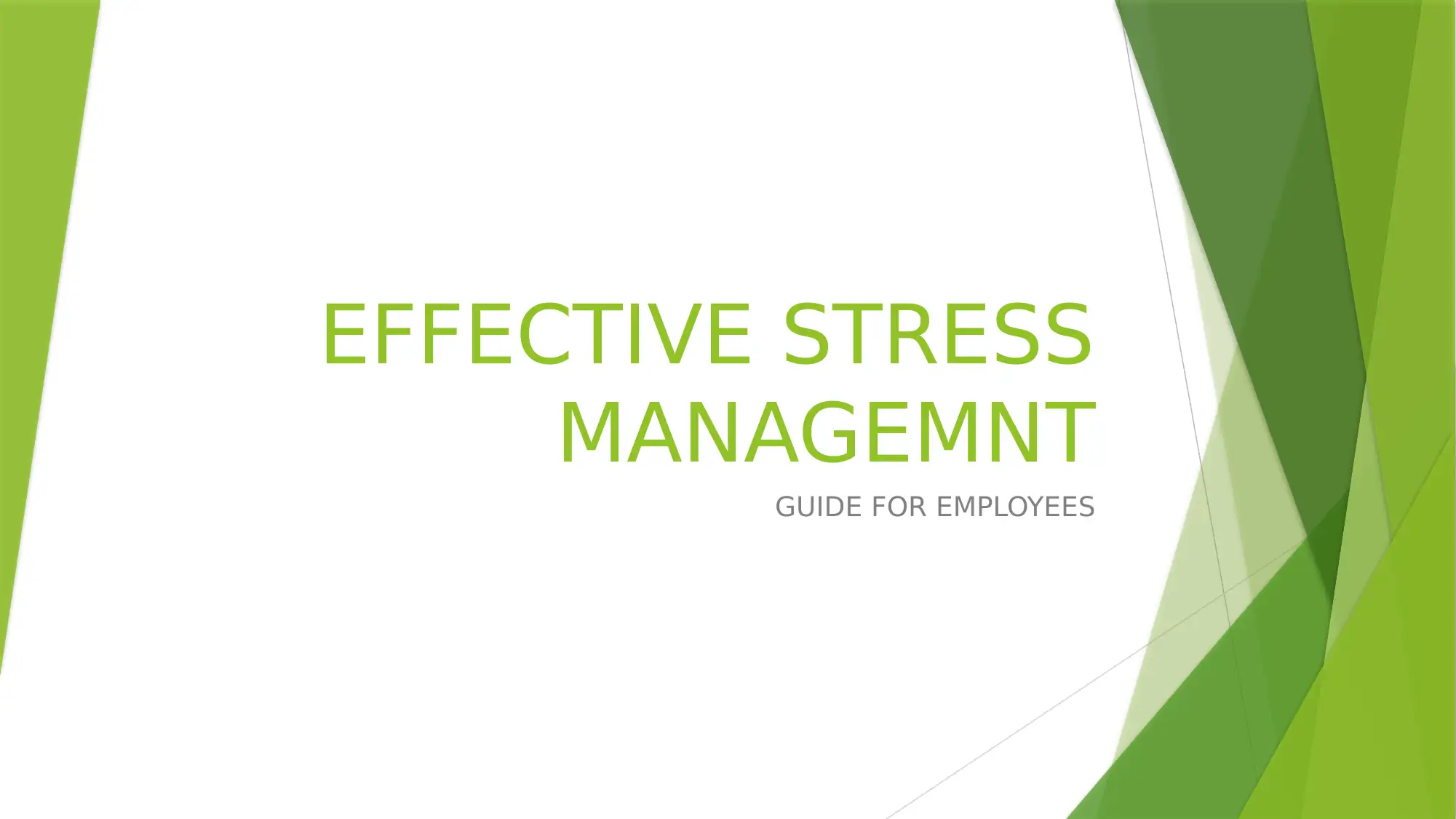
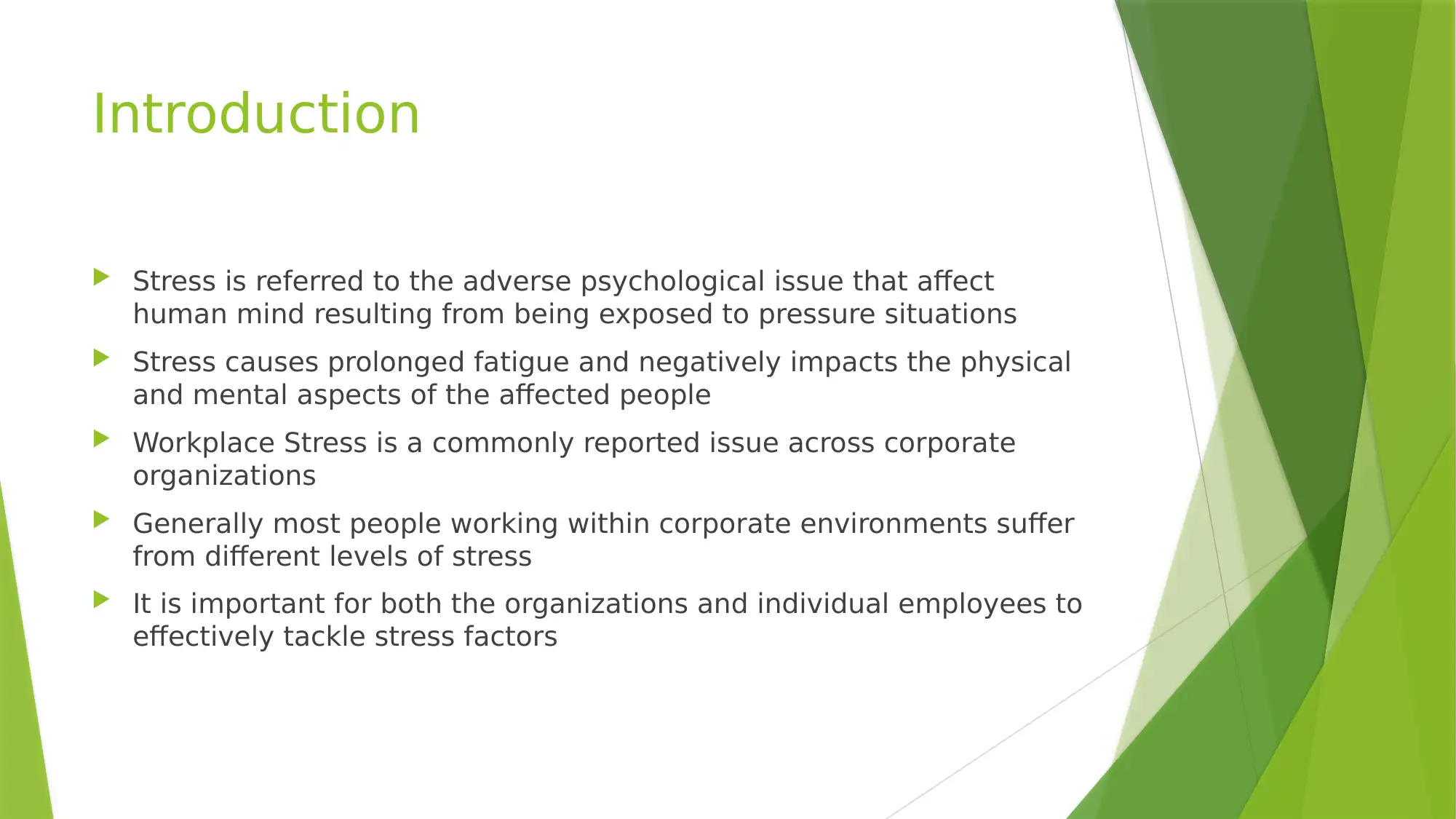
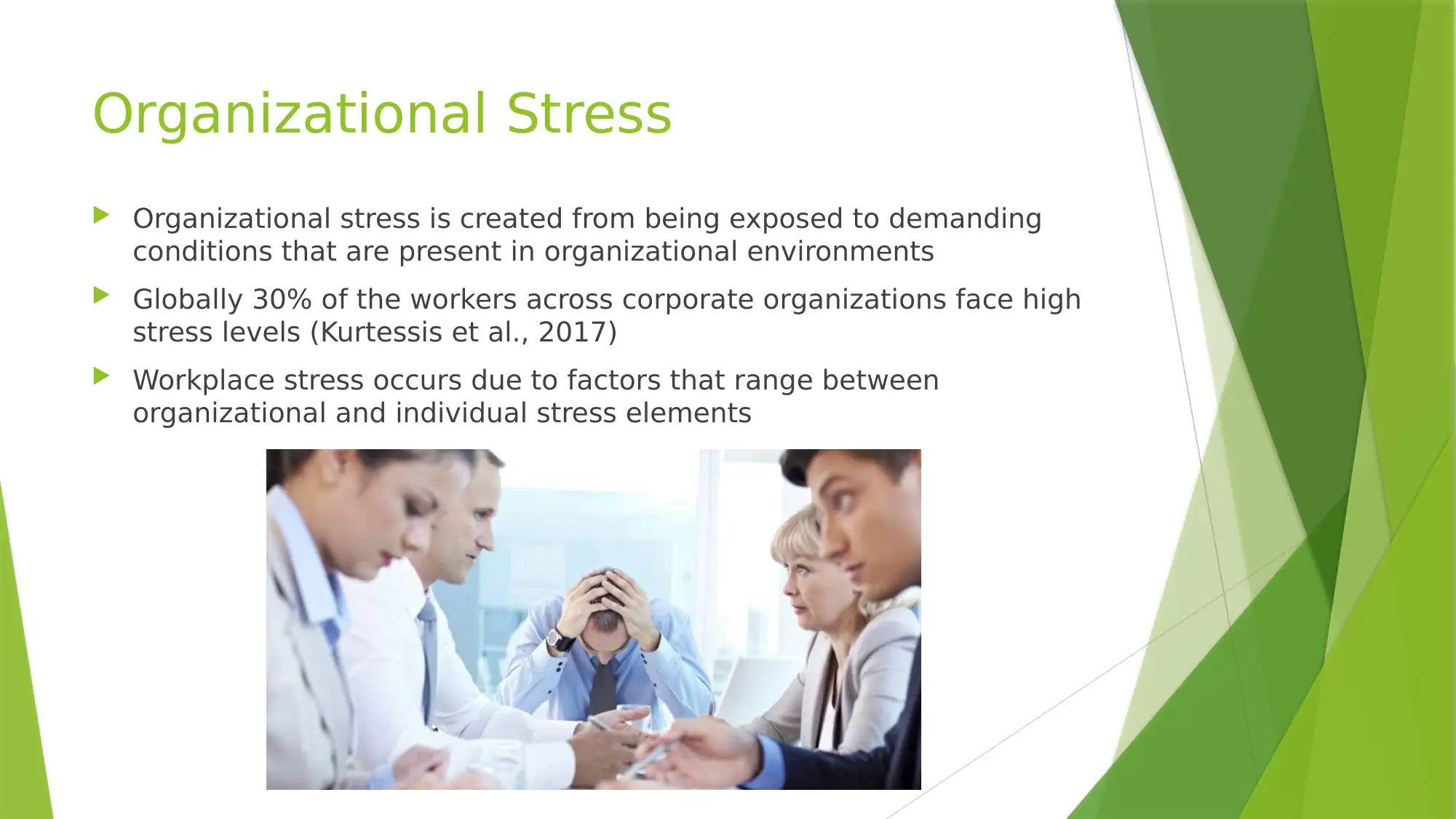

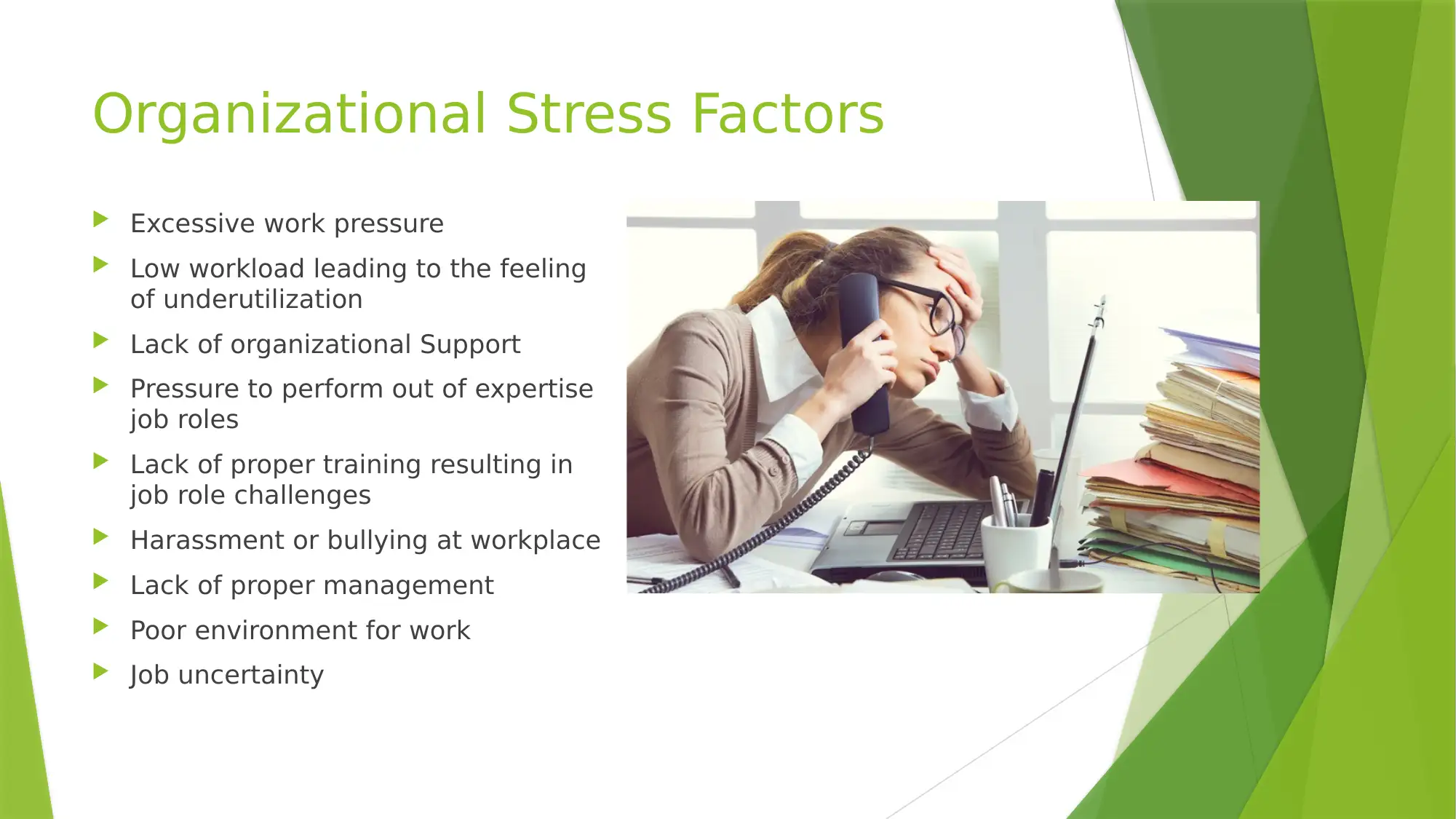
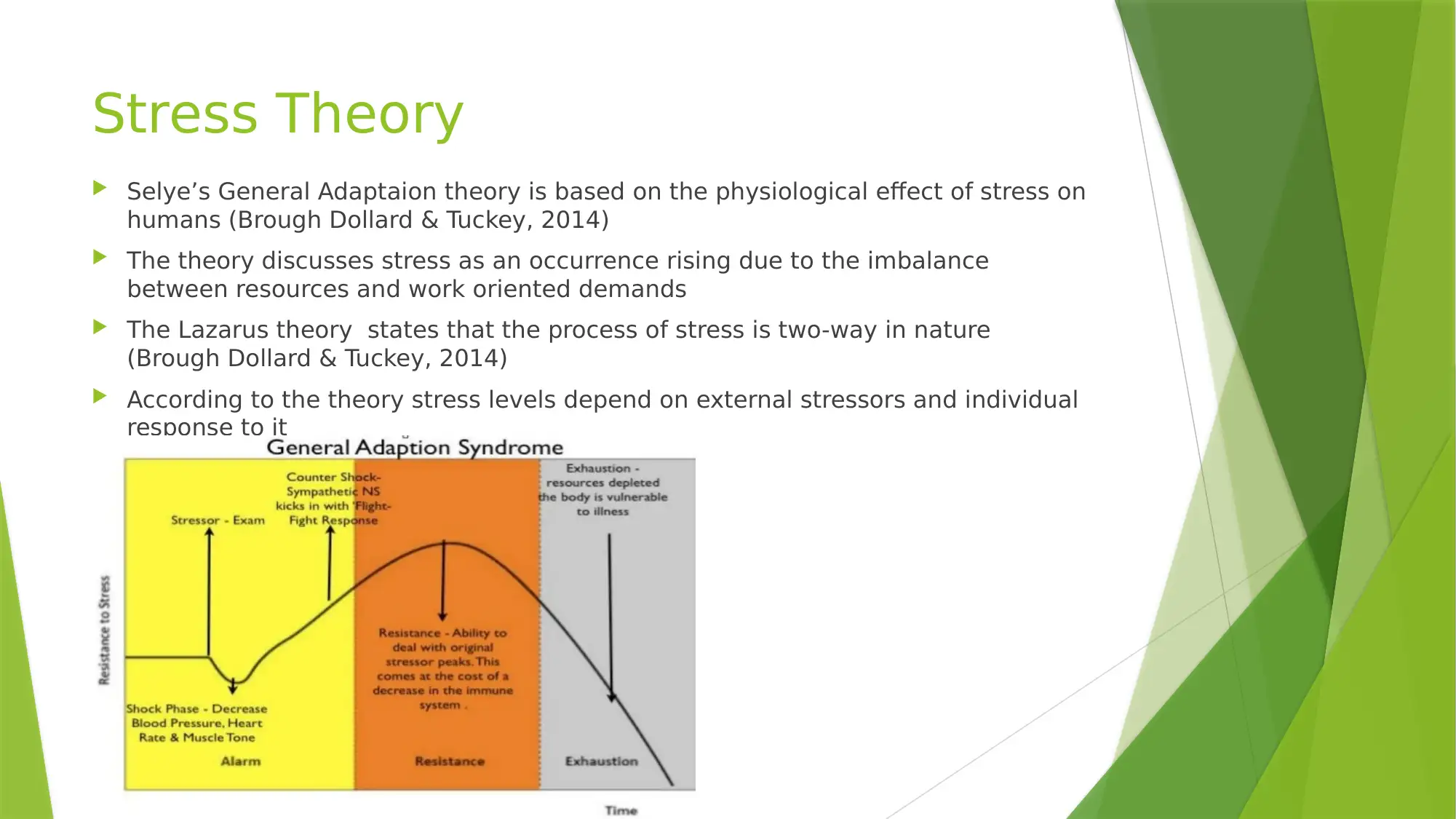
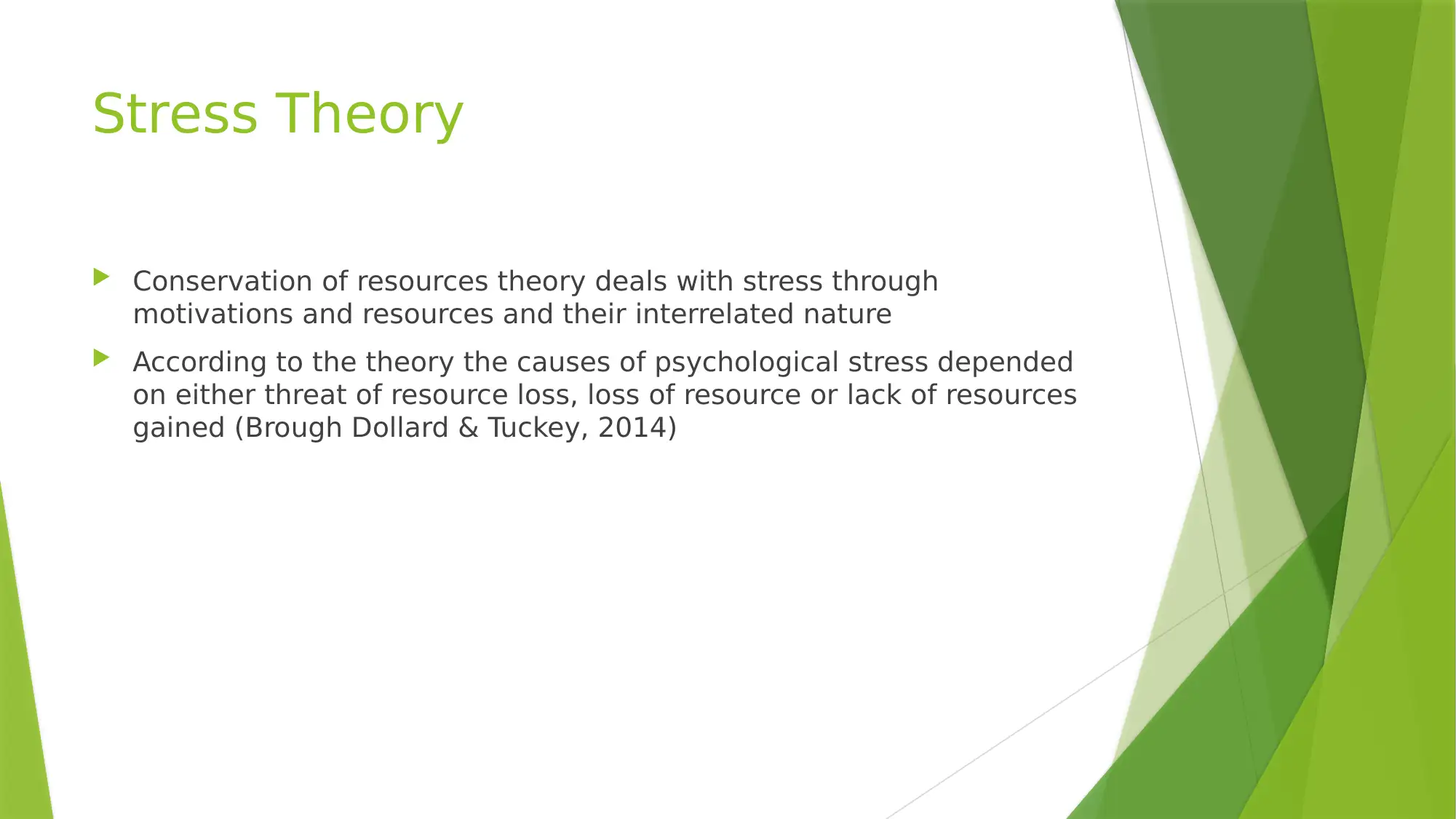
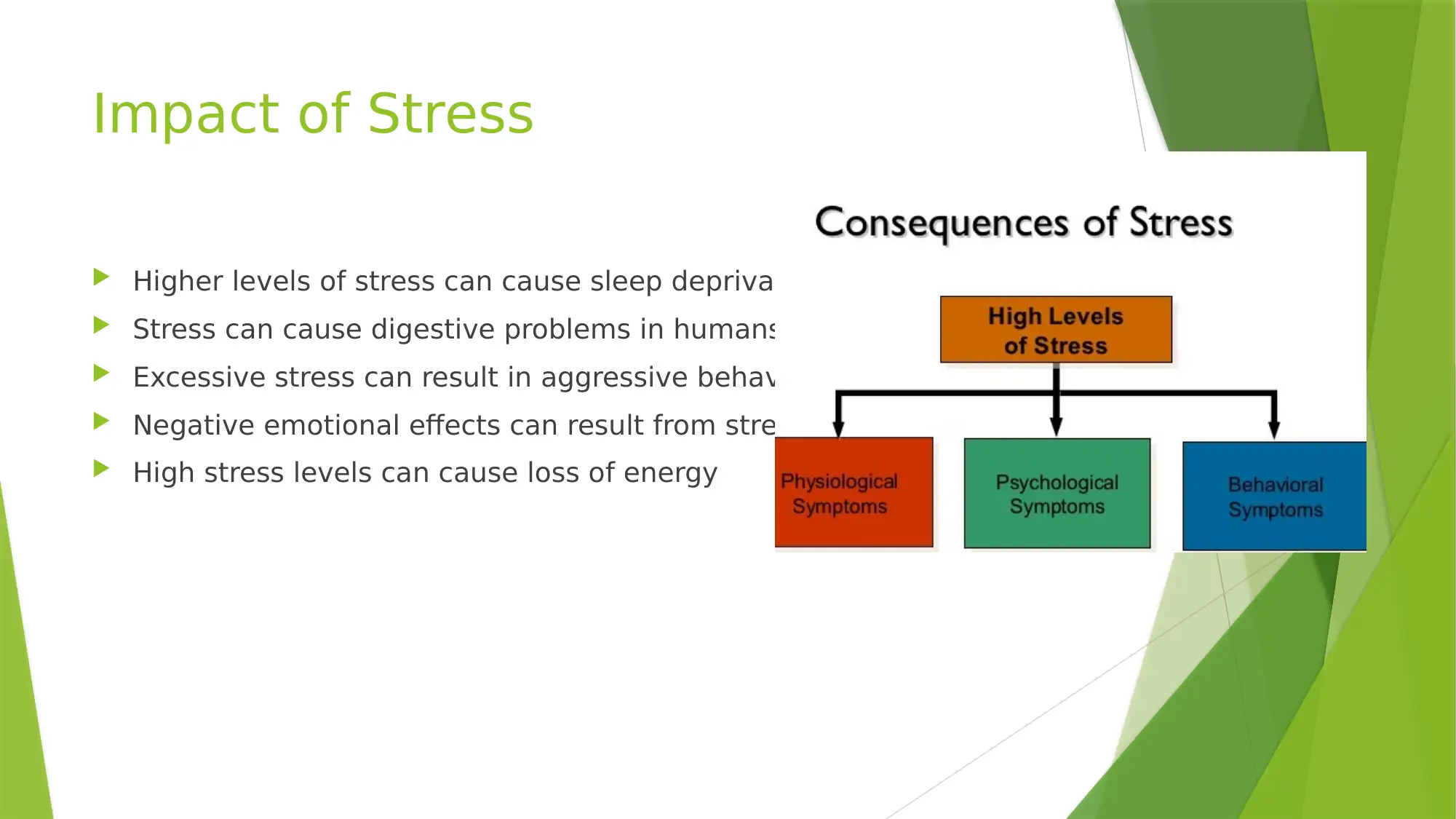
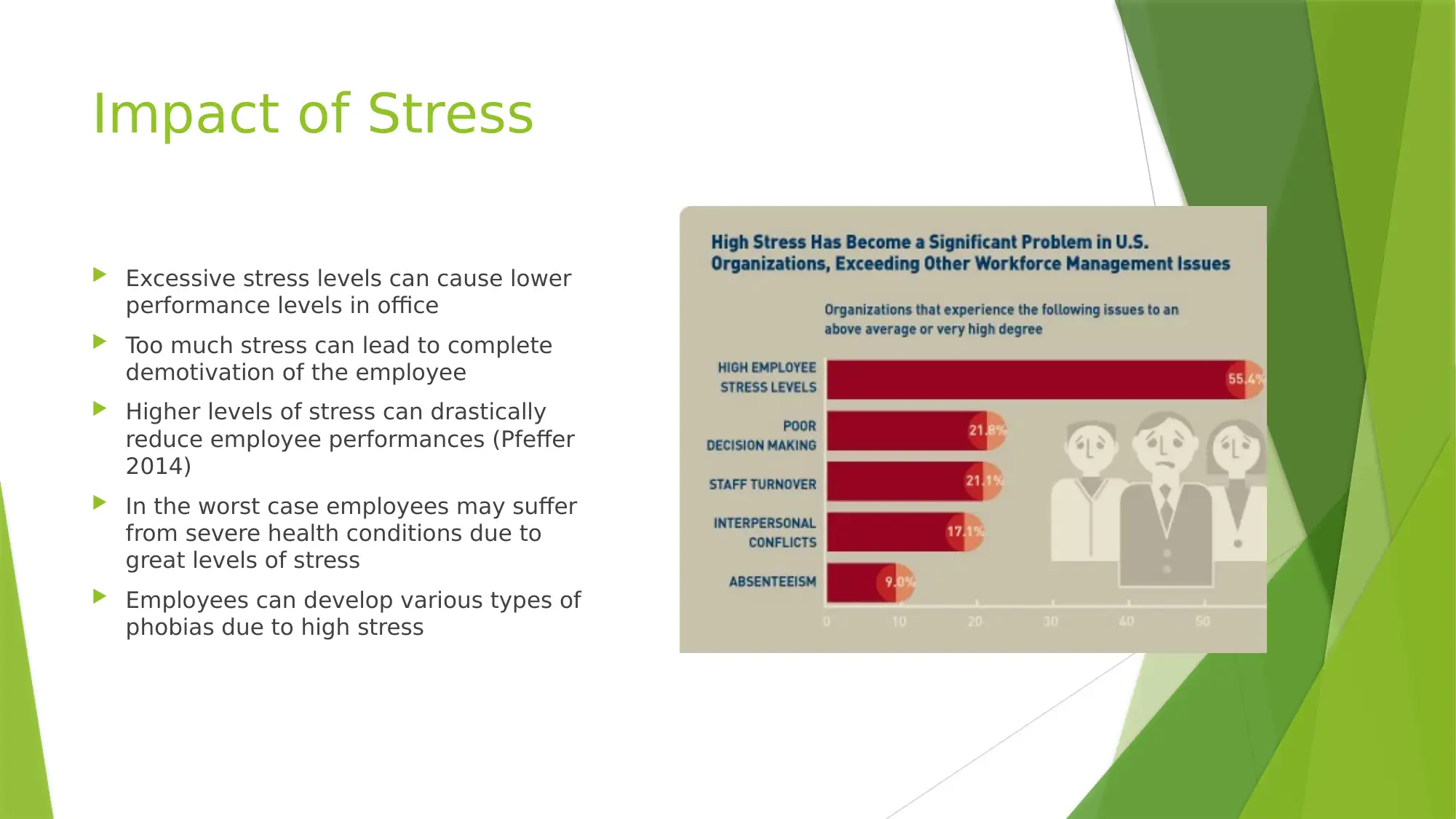
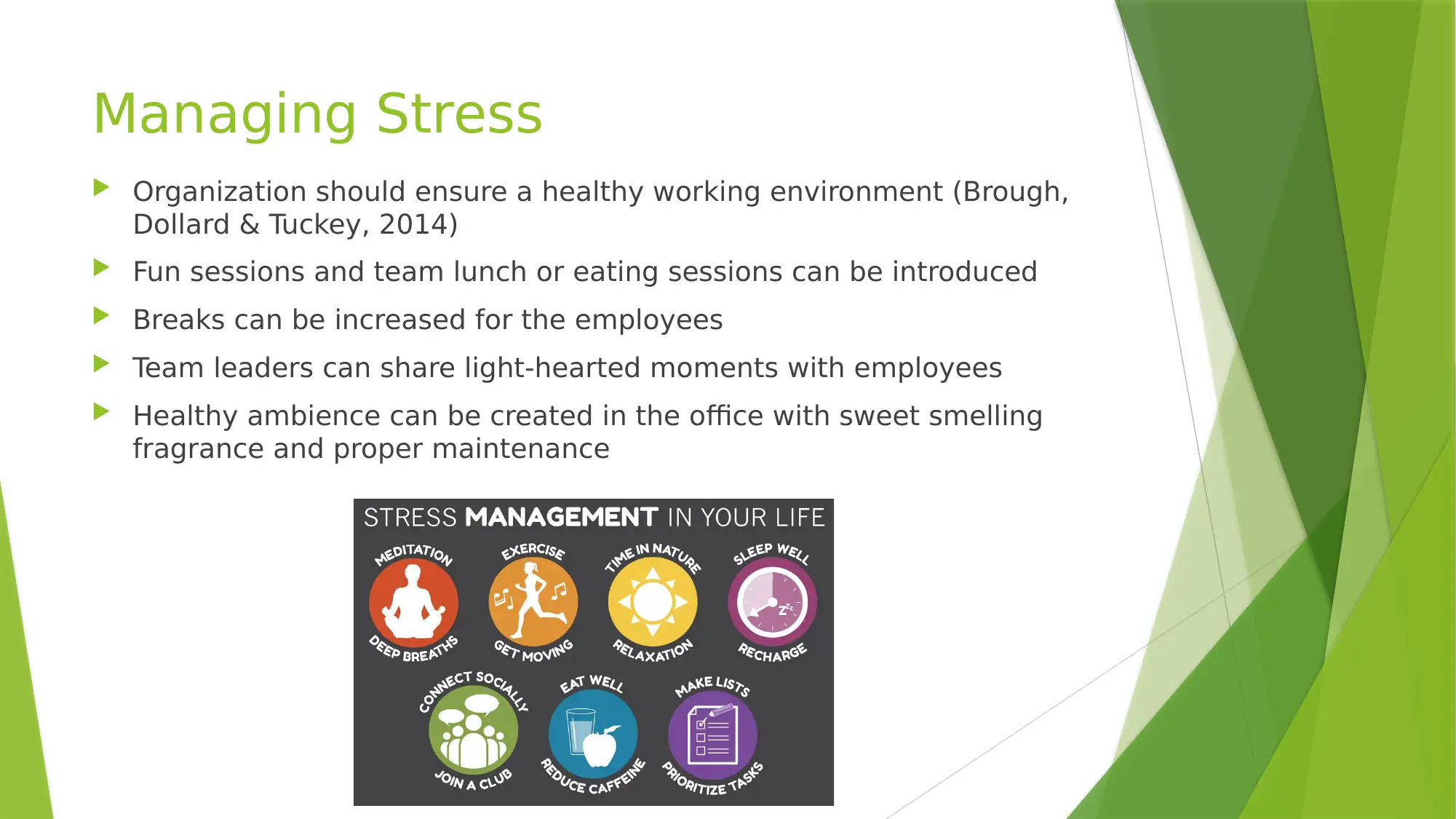
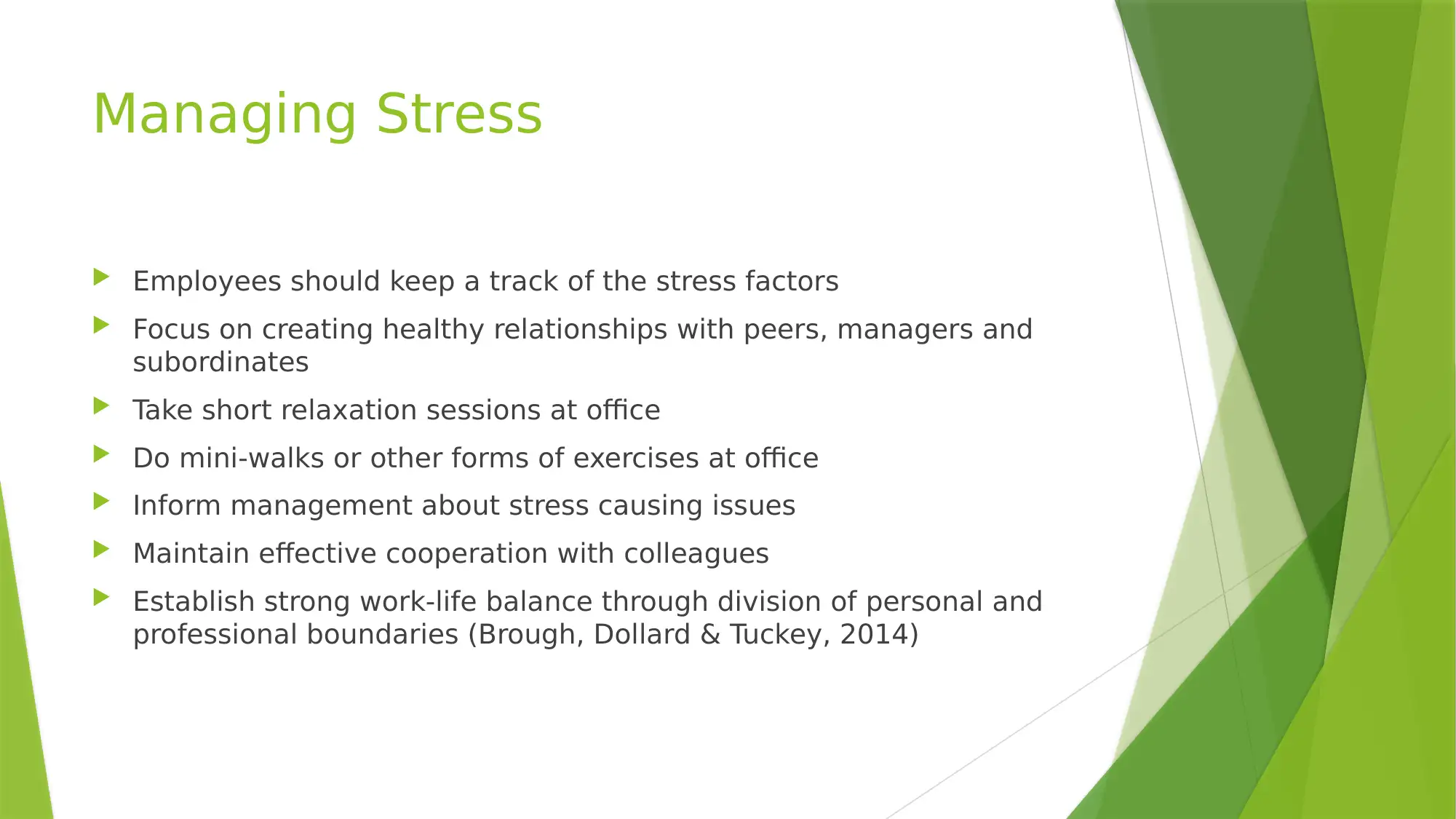
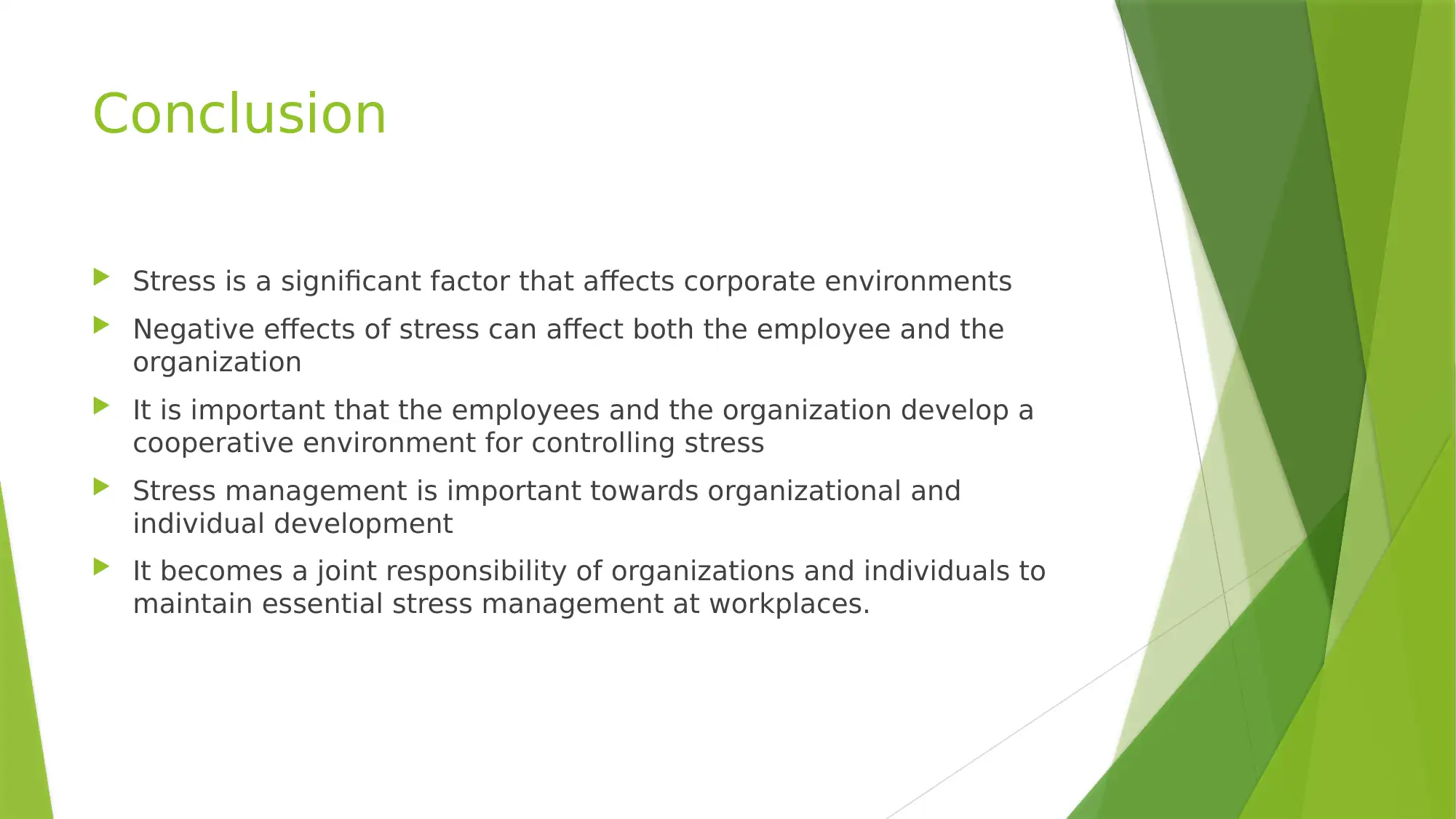
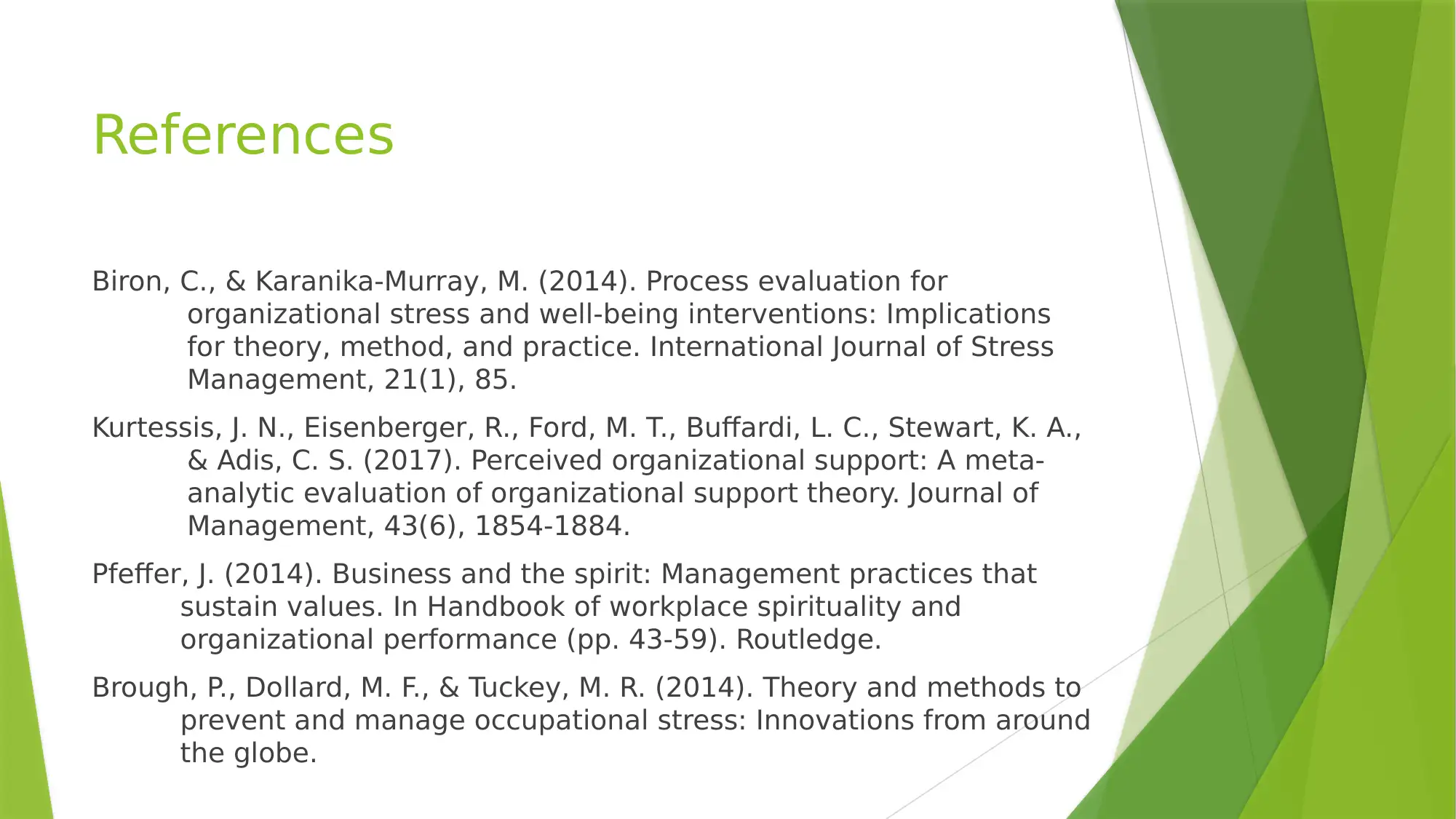






![[object Object]](/_next/static/media/star-bottom.7253800d.svg)